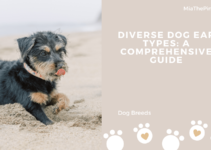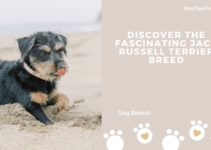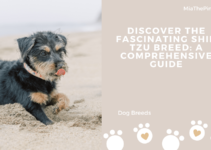Understanding Dog Grooming: Essential Tips for Different Dog Breeds
Grooming your furry friend is not just about keeping them clean and looking fabulous; it is an essential aspect of their overall health and well-being. Regular grooming sessions provide an opportunity to bond with your dog while ensuring their coat, skin, and nails are in top condition. However, when it comes to grooming, different dog breeds have unique needs and requirements that must be taken into consideration.
Importance of Regular Dog Grooming
Grooming plays a vital role in maintaining your dog’s hygiene and health. Regular brushing helps remove dead hair, prevents matting, and stimulates blood circulation. It also allows you to check for any skin issues, parasites, or abnormalities that might require attention. Additionally, grooming sessions provide an opportunity to examine your dog’s ears, teeth, and nails, ensuring they are clean and free from infections.
Factors to Consider Before Grooming Different Dog Breeds
Before diving into the grooming process, it’s crucial to consider a few factors specific to your dog’s breed. Firstly, understand the coat type and grooming requirements of your furry companion. Some breeds have long, flowing hair that demands regular brushing, while others have short, low-maintenance coats. Secondly, take into account your dog’s temperament and comfort level with grooming activities. Some dogs may require a more patient and gentle approach, while others may enjoy the process.
Grooming Tips for Long-Haired Dog Breeds
Long-haired dog breeds, such as the Afghan Hound or the Shih Tzu, require extra care and attention to maintain their luxurious coats. Regular brushing is essential to prevent tangles and matting. Begin by gently combing through the hair, starting from the roots and working your way to the tips. Pay close attention to areas prone to matting, such as behind the ears and under the legs. Additionally, consider scheduling regular professional grooming sessions to keep their coat in top shape.
Grooming Tips for Short-Haired Dog Breeds
Short-haired dog breeds, like the Boxer or the Labrador Retriever, may not require as much brushing as their long-haired counterparts, but grooming is still necessary. Use a soft-bristle brush or a grooming mitt to remove loose hair and distribute natural oils in their coat. Short-haired dogs also benefit from occasional baths to keep their skin clean and free from debris. Remember to use dog-specific shampoos and conditioners to avoid skin irritation.
Special Considerations for Grooming Small Dog Breeds
Small dog breeds, such as Chihuahuas or Pomeranians, have their own unique grooming needs. Due to their delicate size, it’s important to handle them with extra care during grooming sessions. Use a small, soft brush to remove loose hair and prevent matting. Pay close attention to their teeth, as small breed dogs are more prone to dental issues. Regularly brush their teeth using dog-friendly toothpaste and provide appropriate chew toys to promote dental health.
Grooming Tips for Large Dog Breeds
Large dog breeds, like the German Shepherd or the Golden Retriever, require regular grooming to keep their coats healthy and shiny. Use a slicker brush or a grooming rake to remove loose hair and prevent matting. Pay close attention to their paws and nails, as large dogs tend to be more active and may require more frequent nail trims. Additionally, regular ear cleaning is crucial to prevent infections, especially in breeds with floppy ears.
Remember, grooming is not just about maintaining your dog’s physical appearance; it is a way to show them love and care. By understanding the specific grooming needs of your dog breed and following the appropriate tips, you can ensure your furry friend remains happy, healthy, and looking their best!
FAQs
What is the importance of regular dog grooming?
Regular dog grooming is important for maintaining your dog’s hygiene and health. It helps remove dead hair, prevents matting, stimulates blood circulation, and allows for the detection of any skin issues or abnormalities. Grooming sessions also provide an opportunity to check and clean your dog’s ears, teeth, and nails.
What factors should be considered before grooming different dog breeds?
Before grooming, it is crucial to consider your dog’s breed and specific grooming requirements. Understand the coat type and grooming needs of your dog. Also, take into account your dog’s temperament and comfort level with grooming activities.
What are some grooming tips for long-haired dog breeds?
Long-haired dog breeds require extra care. Regular brushing is essential to prevent tangles and matting. Start by gently combing through the hair, paying attention to areas prone to matting. Consider scheduling professional grooming sessions for their coat maintenance.
What are some grooming tips for short-haired dog breeds?
Short-haired dog breeds still require grooming. Use a soft-bristle brush or grooming mitt to remove loose hair and distribute natural oils in their coat. Occasional baths are also beneficial for keeping their skin clean. Remember to use dog-specific shampoos and conditioners.
What special considerations should be taken for grooming small dog breeds?
Small dog breeds require extra care due to their delicate size. Handle them with gentleness during grooming sessions. Use a small, soft brush to remove loose hair and prevent matting. Pay close attention to their teeth and provide appropriate chew toys for dental health.




